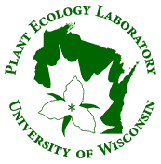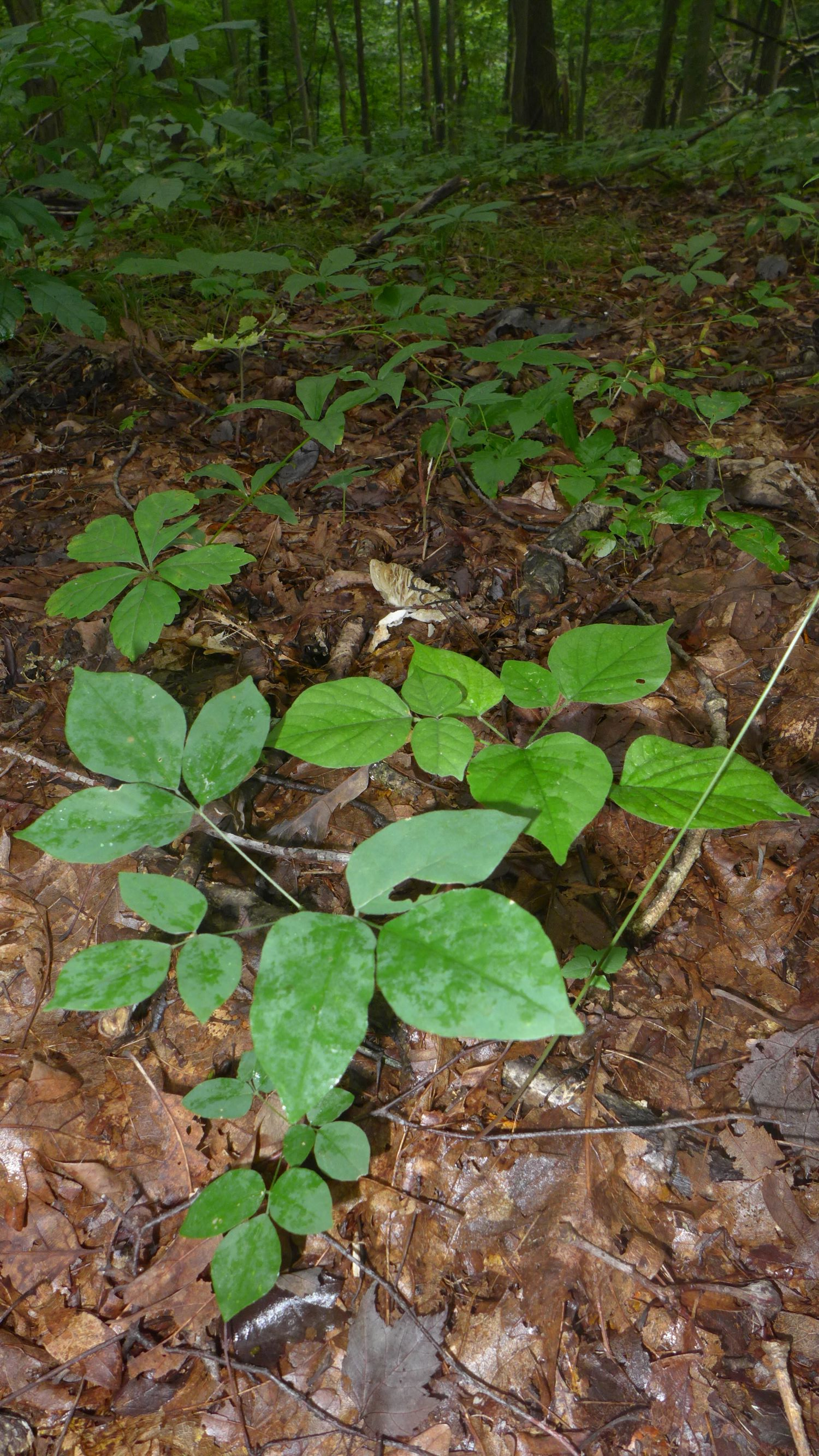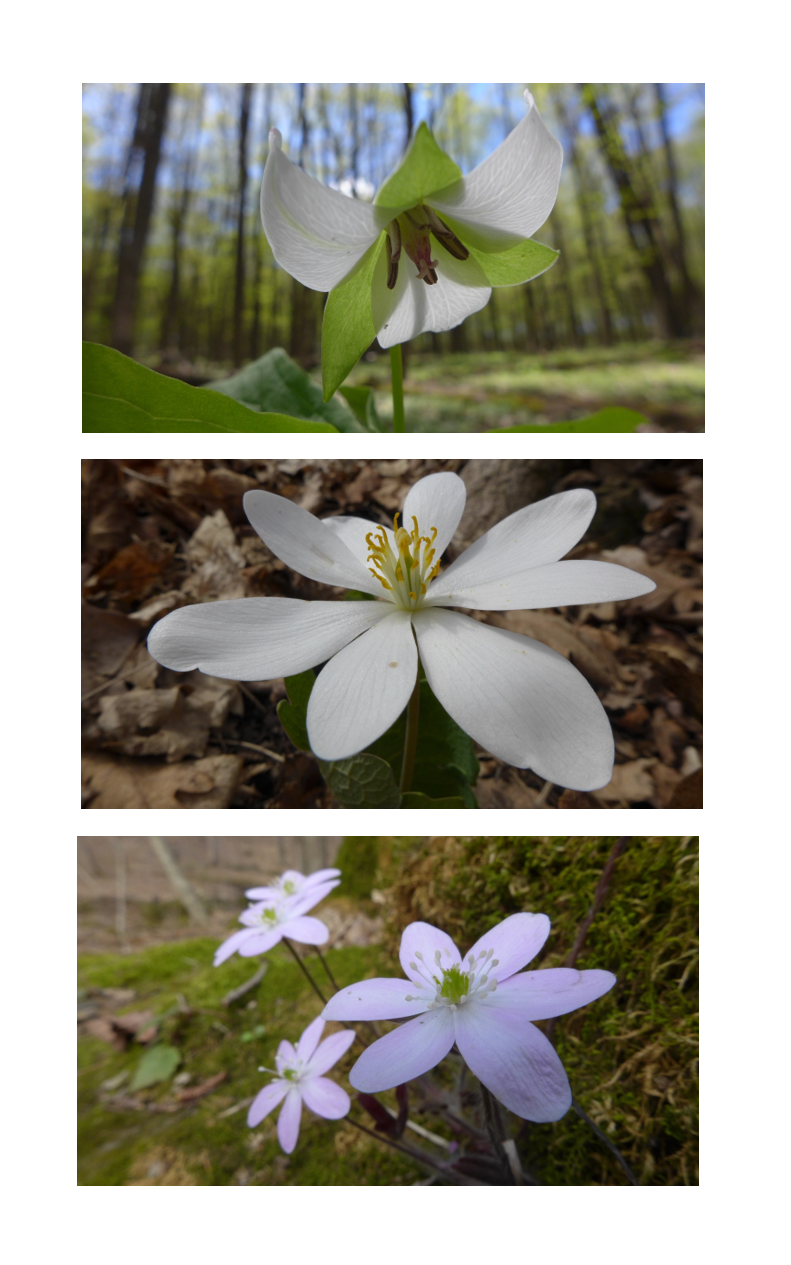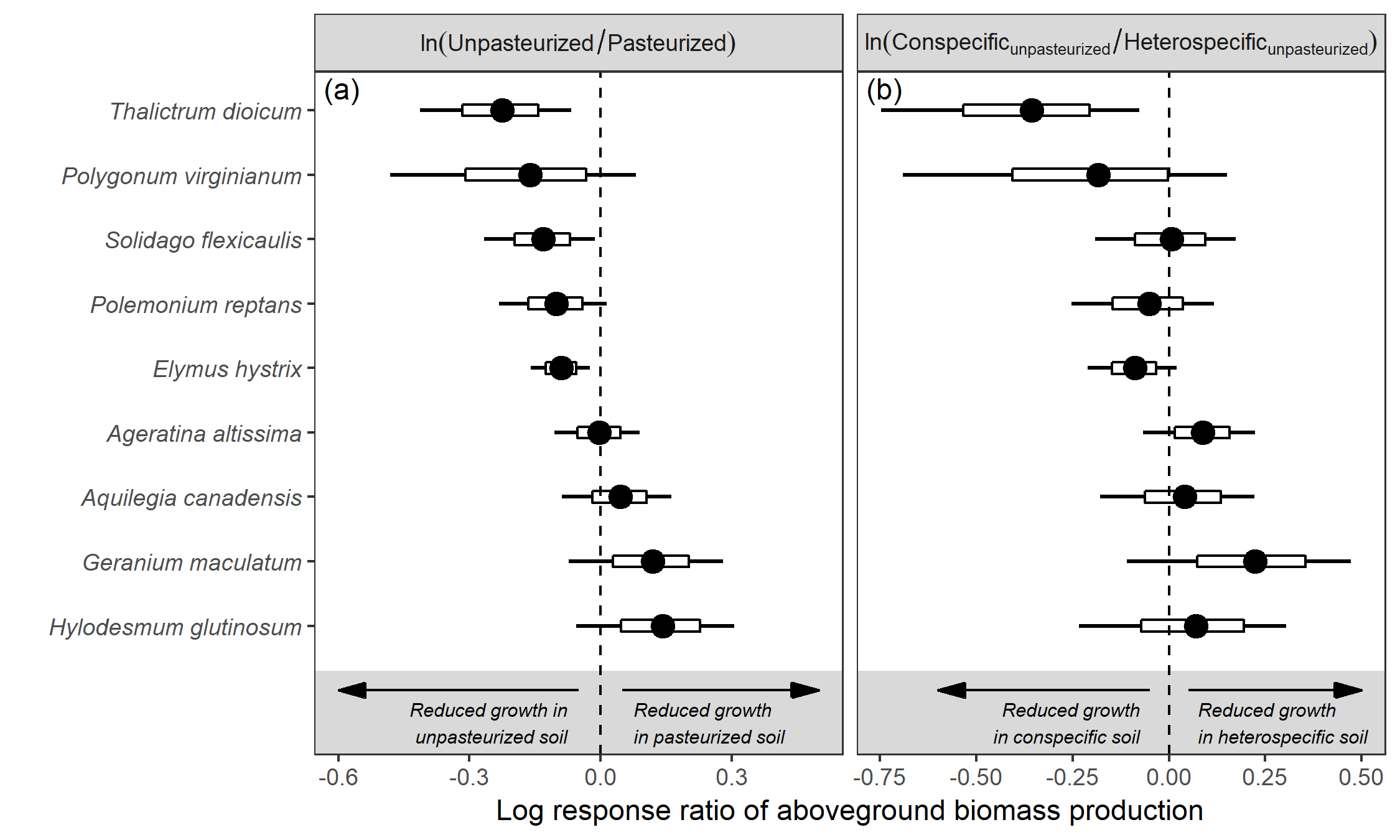Plant distributions and diversity in temperate forests
 Herbaceous plants represent ~80 percent of the plant species found in temperate forest. How can all of these species coexist? My PhD research explored factors influencing the distribution, abundance, and diversity of herbaceous plant species in temperate forests. I am especially interested in processes that facilitate local coexistence and help maintain plant species diversity in temperate forests. A recording of my PhD exit seminar is available the UW-Madison Botany Department’s YouTube Channel.
Herbaceous plants represent ~80 percent of the plant species found in temperate forest. How can all of these species coexist? My PhD research explored factors influencing the distribution, abundance, and diversity of herbaceous plant species in temperate forests. I am especially interested in processes that facilitate local coexistence and help maintain plant species diversity in temperate forests. A recording of my PhD exit seminar is available the UW-Madison Botany Department’s YouTube Channel.
Examining the influence of functional traits and phylogenetic relationships on plant community assembly
 The composition and diversity of ecological communities reflects a complex set of interactions between organisms and their environment. Using extensive plant community surveys from 247 forest stands across Wisconsin, I examined how plant distributions were influenced by environmental conditions, functional traits, and phylogenetic relationships. Plant distributions across the landscape were strongly influenced by plant traits and environmental conditions. Within forest stands, however, neither traits nor phylogenetic relationships predicted patterns of species co-occurrence at finer spatial scales. These findings offer insights into the ecological processes structuring understory plant communities and the spatial scales at which those processes operate.
The composition and diversity of ecological communities reflects a complex set of interactions between organisms and their environment. Using extensive plant community surveys from 247 forest stands across Wisconsin, I examined how plant distributions were influenced by environmental conditions, functional traits, and phylogenetic relationships. Plant distributions across the landscape were strongly influenced by plant traits and environmental conditions. Within forest stands, however, neither traits nor phylogenetic relationships predicted patterns of species co-occurrence at finer spatial scales. These findings offer insights into the ecological processes structuring understory plant communities and the spatial scales at which those processes operate.
Coexistence among close relatives
 Coexistence among closely related species poses an ecological dilemma: as a result of the evolutionary history,
close relatives often share ecological characteristics. This favors co-occurrence in suitable habitats. Yet, species
that are too ecologically similar are expected to compete more strongly leading to competitive exclusion. I studied
a pair of herbaceous plants, Hylodesmum glutinosum and H. nudiflorum, that co-occur regularly in eastern North American forests to explore how physiological characteristics influence their distribution and co-occurrence patterns across spatial scales. On the whole, the Hylodesmum congeners exhibitted many physiological similarities and broadly overlapping ecological distributions. The primary difference we observed was plant stature: H. glutinosum holds its leaves higher above the ground and can be found in a broad range of habitats. Meanwhile, H. nudiflorum occurs in a narrower range of habitats and its distribution falls almost entirely within the distribution of H. glutinosum. These congeners co-occur moderately shaded oak forests where H. glutinosum’s primary competitive advantage (a superior competitor for light because of its greater leaf height) is diminished suggesting equalizing processes rather than niche segregation may promote local coexistence.
Coexistence among closely related species poses an ecological dilemma: as a result of the evolutionary history,
close relatives often share ecological characteristics. This favors co-occurrence in suitable habitats. Yet, species
that are too ecologically similar are expected to compete more strongly leading to competitive exclusion. I studied
a pair of herbaceous plants, Hylodesmum glutinosum and H. nudiflorum, that co-occur regularly in eastern North American forests to explore how physiological characteristics influence their distribution and co-occurrence patterns across spatial scales. On the whole, the Hylodesmum congeners exhibitted many physiological similarities and broadly overlapping ecological distributions. The primary difference we observed was plant stature: H. glutinosum holds its leaves higher above the ground and can be found in a broad range of habitats. Meanwhile, H. nudiflorum occurs in a narrower range of habitats and its distribution falls almost entirely within the distribution of H. glutinosum. These congeners co-occur moderately shaded oak forests where H. glutinosum’s primary competitive advantage (a superior competitor for light because of its greater leaf height) is diminished suggesting equalizing processes rather than niche segregation may promote local coexistence.
Soil depth and spatial niche partitioning among spring flowering forest herbs
 Environmental heterogeneity and physiological differences among species plays an important role in shaping the distribution of forest plant species, especially across conspicuous environmental in light availability, soil moisture, and nutrient availability. Does environmental heterogeneity also influence the distribution of plant species within forest stands and could fine-scale environmental variation help maintain local species diversity? To explore whether spring flowering forest herbs partition habitat at fine spatial scales, I mapped the distribution of Anemone acutiloba, Sanguinaria canadensis, and Trillium flexipes within a 50 x 50 meter plot at McGilvra Woods State Natural Area (Sauk County, WI). A. acutiloba was restricted to shallow soils near the base of canopy trees while the distribution S. canadensis and T. flexipes did not reflect variation in soil depth of proximity to neighboring trees. Variation in soil depth and physiological differences among forest herbs contribute to fine-scale habitat paritioning that could maintain understory plant diversity in temperate forests.
Environmental heterogeneity and physiological differences among species plays an important role in shaping the distribution of forest plant species, especially across conspicuous environmental in light availability, soil moisture, and nutrient availability. Does environmental heterogeneity also influence the distribution of plant species within forest stands and could fine-scale environmental variation help maintain local species diversity? To explore whether spring flowering forest herbs partition habitat at fine spatial scales, I mapped the distribution of Anemone acutiloba, Sanguinaria canadensis, and Trillium flexipes within a 50 x 50 meter plot at McGilvra Woods State Natural Area (Sauk County, WI). A. acutiloba was restricted to shallow soils near the base of canopy trees while the distribution S. canadensis and T. flexipes did not reflect variation in soil depth of proximity to neighboring trees. Variation in soil depth and physiological differences among forest herbs contribute to fine-scale habitat paritioning that could maintain understory plant diversity in temperate forests.
Variation in plant-soil feedbacks among forest herbs
 Interactions between plants and soil microorganisms can influence the distribution, abundance, and diversity of plant species. For example, host-specific pathogens that accumulate at high plant densities can maintain plant diversity by preventing any single species from becoming too abundant. While plant-soil interactions have been studied in many plant communities, little is known about plant-soil interaction among forest herbs. To investigate whether plant-soil feedbacks could promote coexistence among temperate forest herbs, I conducted a greenhouse experiment growing nine herbaceous plant species in soils with different microbial communities. The effect of soil biota on seedling growth varied considerably among species. Four species grew more slowly in unsterilized soil suggesting that soil pathogens inhibit plant growth while other focal species were apparently unaffected by soil microbes. These results suggest plant-soil interactions play an important but previously underappreciated role in determining the distribution, abundance, and diversity of temperate forest herbs.
Interactions between plants and soil microorganisms can influence the distribution, abundance, and diversity of plant species. For example, host-specific pathogens that accumulate at high plant densities can maintain plant diversity by preventing any single species from becoming too abundant. While plant-soil interactions have been studied in many plant communities, little is known about plant-soil interaction among forest herbs. To investigate whether plant-soil feedbacks could promote coexistence among temperate forest herbs, I conducted a greenhouse experiment growing nine herbaceous plant species in soils with different microbial communities. The effect of soil biota on seedling growth varied considerably among species. Four species grew more slowly in unsterilized soil suggesting that soil pathogens inhibit plant growth while other focal species were apparently unaffected by soil microbes. These results suggest plant-soil interactions play an important but previously underappreciated role in determining the distribution, abundance, and diversity of temperate forest herbs.